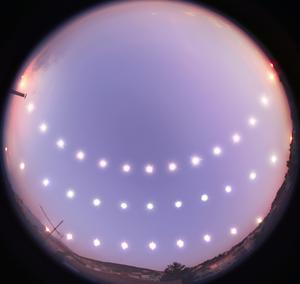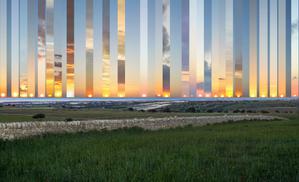Glossary term: Solstice
Description: Earth's axis is not perpendicular to Earth's orbit around the Sun, but inclined at an angle of 23.4 degrees from the perpendicular. In consequence, at different parts of its orbit, the angle between Earth's axis and our sightline to the Sun varies over one year. The practical effect is that for an observer on Earth, the highest point that the Sun will reach above the horizon in a given day will vary. The northern summer solstice, which is also the southern winter solstice, occurs around June 21 and is the time when the Sun is highest above the horizon in the northern hemisphere and at the same time lowest in the southern hemisphere. The southern summer solstice, which is also the northern winter solstice, occurs around December 21 and is the time the Sun is highest in the southern and at the same time lowest in the northern hemisphere.
Related Terms:
See this term in other languages
Term and definition status: This term and its definition have been approved by a research astronomer and a teacher
The OAE Multilingual Glossary is a project of the IAU Office of Astronomy for Education (OAE) in collaboration with the IAU Office of Astronomy Outreach (OAO). The terms and definitions were chosen, written and reviewed by a collective effort from the OAE, the OAE Centers and Nodes, the OAE National Astronomy Education Coordinators (NAECs) and other volunteers. You can find a full list of credits here. All glossary terms and their definitions are released under a Creative Commons CC BY-4.0 license and should be credited to "IAU OAE".
If you notice a factual error in this glossary definition then please get in touch.
Related Media
Where the Sun Sets Every Month
Credit: John Paul Pile/IAU OAE (CC BY 4.0)
License: CC-BY-4.0 Creative Commons Attribution 4.0 International (CC BY 4.0) icons
The Path of the Sun
Credit: Frank Niessen/IAU OAE (CC BY 4.0)
License: CC-BY-4.0 Creative Commons Attribution 4.0 International (CC BY 4.0) icons
Solstices and Equinox
Credit: Tunç Tezel/IAU OAE (CC BY 4.0)
License: CC-BY-4.0 Creative Commons Attribution 4.0 International (CC BY 4.0) icons
Occasive Amplitude
Credit: Marcella Giulia Pace/IAU OAE (CC BY 4.0)
License: CC-BY-4.0 Creative Commons Attribution 4.0 International (CC BY 4.0) icons












